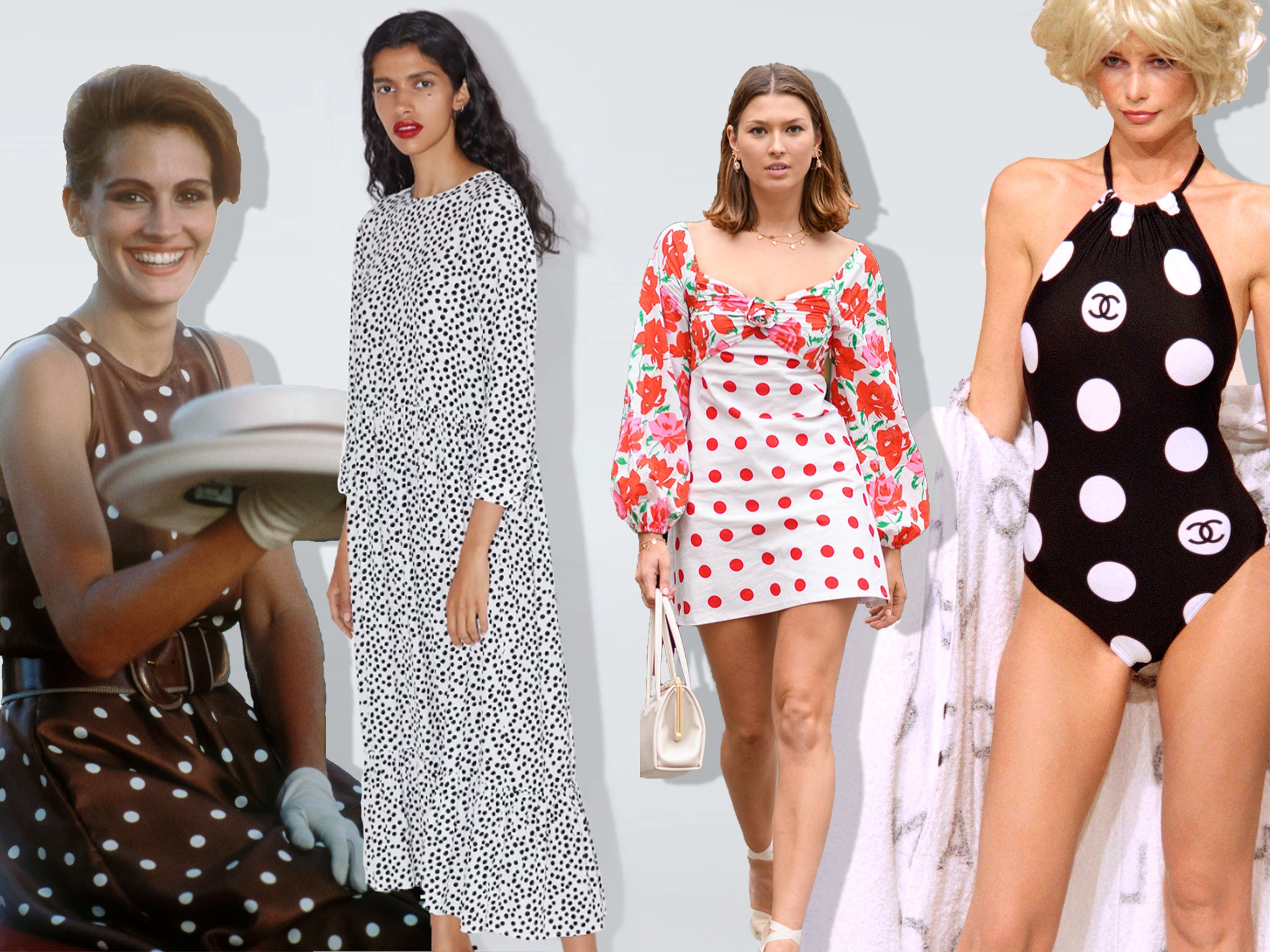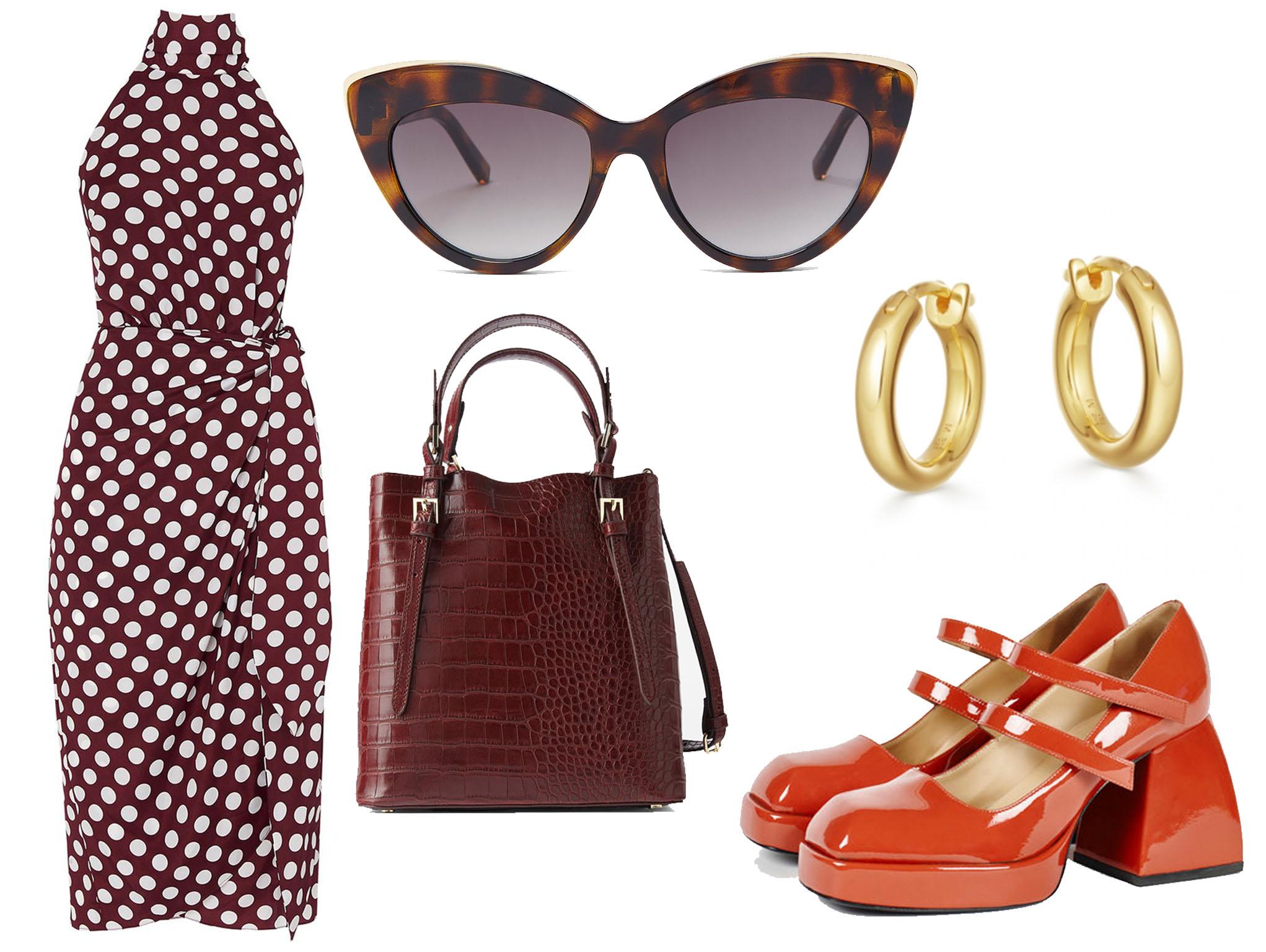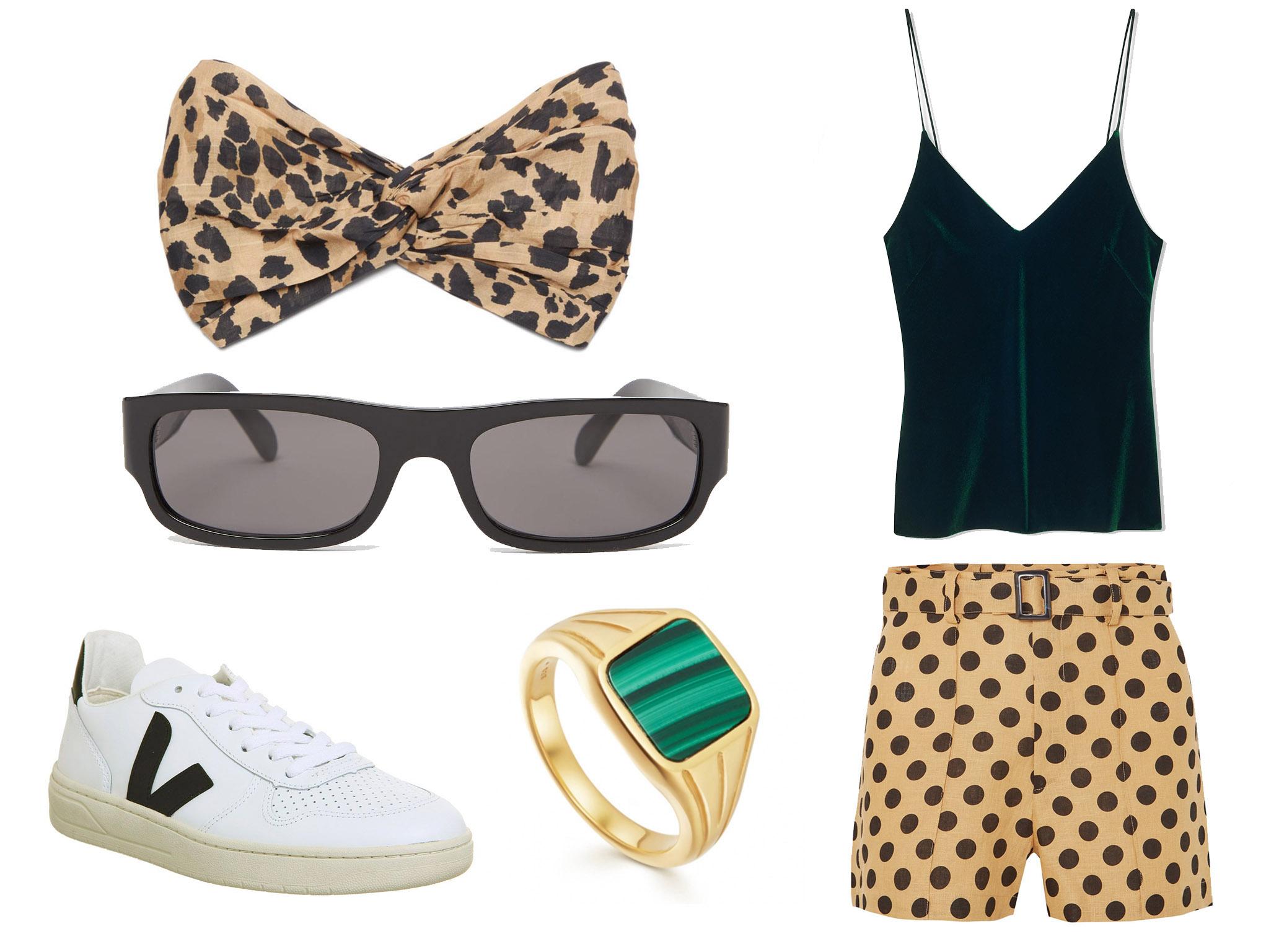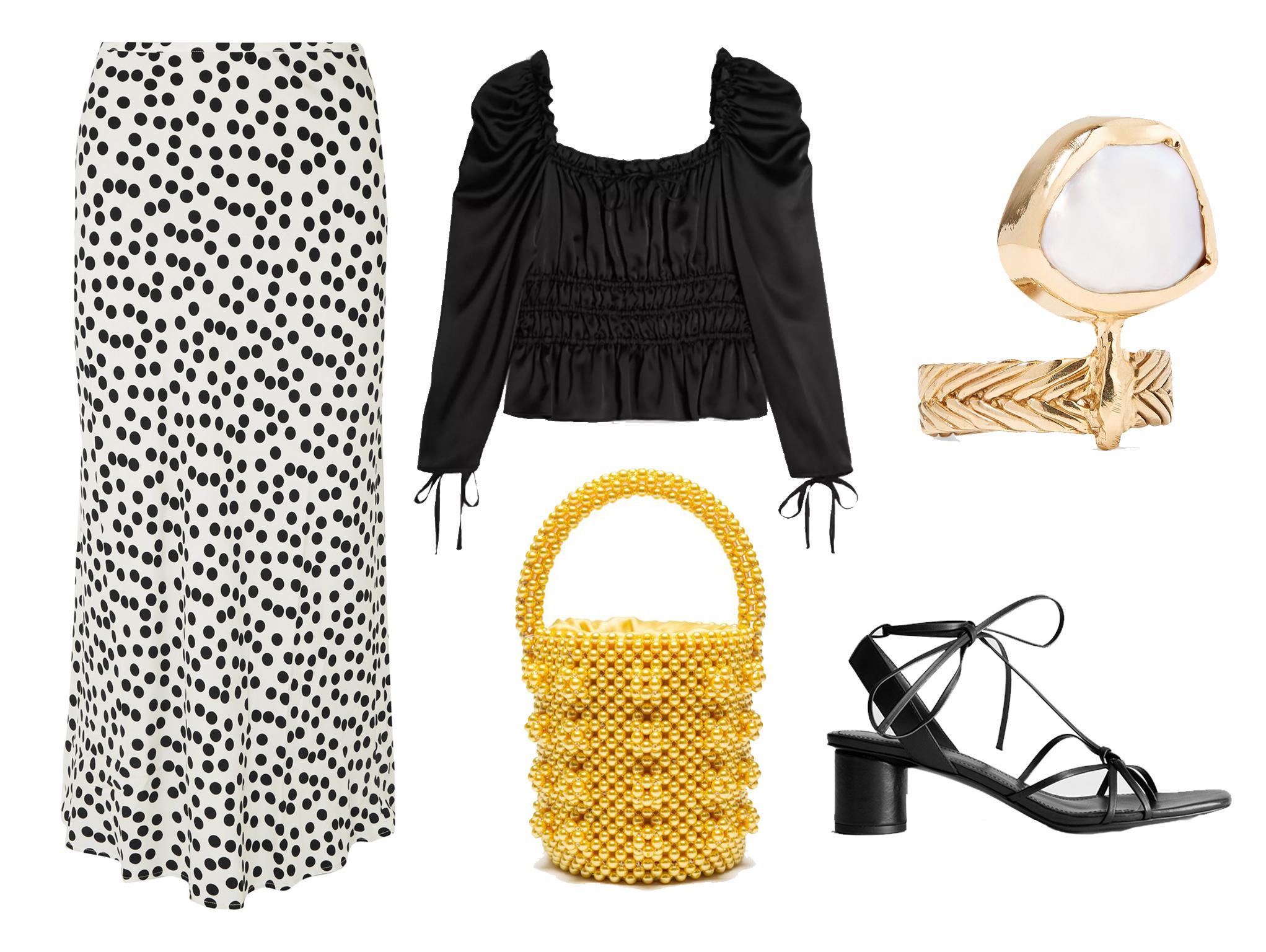The Independent's journalism is supported by our readers. When you purchase through links on our site, we may earn commission.
Why the fashion set went dotty for polka dots this summer
It’s not every day that a dress goes viral. Olivia Petter explains why that polka dot Zara dress became so popular


Your support helps us to tell the story
From reproductive rights to climate change to Big Tech, The Independent is on the ground when the story is developing. Whether it's investigating the financials of Elon Musk's pro-Trump PAC or producing our latest documentary, 'The A Word', which shines a light on the American women fighting for reproductive rights, we know how important it is to parse out the facts from the messaging.
At such a critical moment in US history, we need reporters on the ground. Your donation allows us to keep sending journalists to speak to both sides of the story.
The Independent is trusted by Americans across the entire political spectrum. And unlike many other quality news outlets, we choose not to lock Americans out of our reporting and analysis with paywalls. We believe quality journalism should be available to everyone, paid for by those who can afford it.
Your support makes all the difference.An item of clothing doesn’t usually go viral. But when a polka dot maxi dress from Zara becomes so popular that it spawns its own Instagram handle and acquires a definitive nickname (“the dress”), it’s on par with cat memes and tweets about Trump.
This humble “printed dress”, as it’s called on the retailer’s website, costs just £39.99 and has been spotted in myriad settings, from dance floors and beer gardens to lecture halls and wedding receptions.
One quick look at the dress’s dedicated Instagram account, @hot4thespot, and it’s clear that this is a dress loved by women of all ages. Its design suits any body shape, climate and circumstance – one person wore it when their husband proposed. But what is it about this dress in particular that has made it so universally popular? Some put it down to the fit – loose and flattering – while others credit its monochrome palette, which is easy to wear and versatile.
But almost nobody has mentioned its print, which might just be the most important component of all.
Polka dots have been steadily rising on the trend circuit since March, with online searches for the print having increased by 120 per cent according to global fashion search platform Lyst.
It is, however, a timeless print with a rich sartorial history, one that is fundamental to its appeal today.
The meaning behind dotted fabric patterns has evolved over the years, with the very first ones emerging in medieval Europe – though at the time, dots on clothing were seen as a symbol of the bubonic plague. Not exactly a fashion statement.
“Negative associations with dotted patterns reminded people of deadly and contagious diseases,” explains fashion historian Edite Parute.
Such connotations persisted throughout the Renaissance, Parute tells The Independent, explaining that it wasn’t until the mid-19th century, when polka dancing was having its moment in central Europe, that the pattern started to gather a cult following among the fashion set.
“The polka dance craze of the 1840s prompted manufacturers to produce polka-themed clothing to capitalise on the popularity of the dance, leading them to create hats, jackets and many more items with the pattern,” Parute explains.
But it was in the 1920s when the polka dot as we know it came into its own, making its way onto a swimsuit worn by Miss America, Norma Smallwood, in 1926. And, of course, Disney’s leading lady: Minnie Mouse, whose red polka dot dress and matching bow remain a staple in children’s fancy dress boxes.

Since then, the pattern has been in and out of fashion for decades, notes Emily Gordon-Smith, director of consumer product at trends intelligence company Stylus. In the 1940s, it came in understated sombre shades before becoming oversized and playful in the 1950s and being reimagined in garish multicolour versions during the 1980s.
There have been several significant cultural milestones that have helped immortalise the print over the years too, notes Padute. In 1940, for example, Frank Sinatra’s ballad “Polka Dots and Moonbeams” propelled the pattern into a period of popularity.
The print then reached the upper echelons of fashion in 1954, when Dior’s couture collection featured an elegant, structured black dress with white dots. And who could forget Brian Hyland’s 1960 hit “Itsy Bitsy Teenie Weenie Yellow Polka Dot Bikini”? The joyous jingle convinced every woman around she should be wearing polka dots.
Another notable polka dot popular culture entry came in 1990 via Julia Roberts’ character, Vivian Ward, in the hit romantic comedy Pretty Woman. In the film’s race day scene, when Vivian attends the polo, the former sex worker caps her style trajectory with a brown silk polka dot dress complete with a boater hat and matching patterned ribbon.

Given its historical significance, polka dots have a very strong link to the vintage aesthetic, notes Pardute, who argues that this is the reason why they remain so popular today.
Fashion designers trade in nostalgia, with designers constantly reworking and reviving patterns and trends from a bygone era. Think of Marc Jacobs’ recent resurgence of his 1992 Perry Ellis grunge collection, or hot British brands such as Kitri and Shrimps that produce dresses with clear 1950s influences.

Which brings us back to that Zara dress, or, “the dress”.
“There’s a certain nostalgic appeal to the Zara dress,” notes Dr Harriet Atkinson, senior lecturer in design history at the University of Brighton, pointing out that its cut is more modest than its earlier, cinched-in counterparts, given that it is smocked, with long sleeves and loose fitting to mid-length.
While the shape is key to its appeal, Laura Yiannakou, senior womenswear editor at global trends forecasting company WGSN, explains that thanks to the long history of polka dots, they are almost era-less.
“The polka dot print resurfaces every season,” she tells The Independent. “It’s also not aligned with any particular period in history, unlike the current trend surge in tie-dye in the youth market, which WGSN has been tracking for a while. Polka dots are era-neutral, whereas many women won’t be fans of tie-dye because it reminds them of when they experimented with it the first time round, in the 1960s and 1970s.”

But polka dots stand the test of time thanks to their versatility. “They also make a statement without being too standout,” she explains, noting that “the dress” is the perfect example of a stylish and flattering item of clothing that can be worn across both casual and formal occasions, which is hugely desirable to shoppers at the moment.
“A lot of the trends we are tracking at WGSN right now are centred around lifestyle and comfort – which people expect now – and this dress nails it,” Yiannakou explains. “It’s not enough for a garment just to be stylish. More and more women are making purchase decisions because of how the clothing makes them feel, not just how it makes them look.”
Of course, that’s not to say it’s time for you rush out and buy the dress that your best friend, your boss and your boss’s second cousin already have.
Look to brands like Rixo, Realisation Par, and Zimmermann for playful polka dotted pieces that are just as wearable. And who knows, you might even be the first person to come across a dress that is destined to go viral.
Join our commenting forum
Join thought-provoking conversations, follow other Independent readers and see their replies
Comments